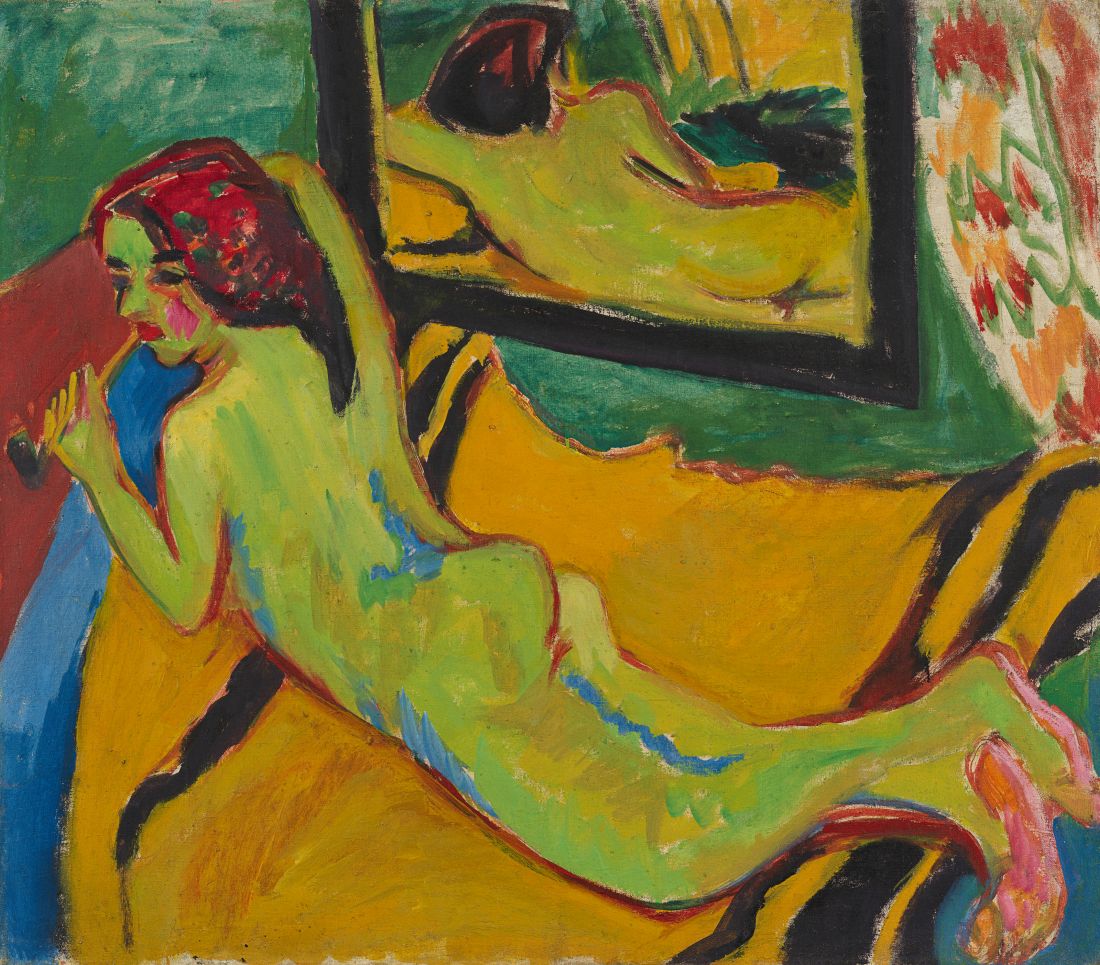
Ernst Ludwig Kirchner, Reclining Nude Before a Mirror (Liegender Akt vor Spiegel), 1909/10 Oil on canvas Brücke Museum, Berlin Photo: Brücke-Museum, Berlin/Nick Ash
This is an excerpt from Aya Soika’s catalogue essay “The Artist Collective Brücke from Today’s Perspective”.
The Studio, a Space for Synthesis Between Art and Life
Runtime: 01:26
Narrator: Our view of what defined Brücke as a group has long been influenced by what we know about their professional practice, which extended far beyond the production of works on canvas or paper. Innovative public relations were part of the strategy (canvassing well-known names from their network of sponsors, organising or participating in exhibitions all over the country, publishing an annual portfolio, and advertising the group on posters) as well as their redefinition of the artist’s private studio.
Nowhere else was that sought-after synthesis between art and life achieved with such enduring consistency. The rooms they rented in Dresden and Berlin were zones of artistic experiment, a private antipode to the public sphere of the exhibition venue.
Kirchner referred in his diary to a lifestyle, and a conception of home and of work that was “strange at the least to normal people”. His Chronik KG Brücke, published in 1913, talks of “creating unison between the new painting and the space”. The studios achieved that. The holistic idea of a studio that was both a place of creativity and a place for living together with fellow-artists and models set an indelible stamp on how posterity saw the Brücke collective.